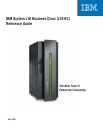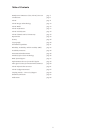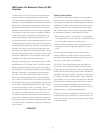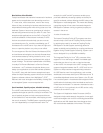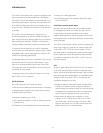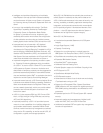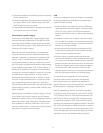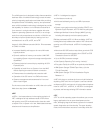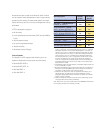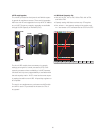More Solutions, More Affordable
Today’s businesses with extensive investments in hardware
assets and core applications are demanding more from
IT—more value, more transactions, more for the money.
Above all, they are looking for business solutions that can
help enable business growth while driving costs out of the
business. System z has an ever growing set of solutions
that are being enhanced to help you lower IT costs. From
enterprise wide applications such as SAP or Cognos
®
BI
to the consolidation of infrastructure workloads, z10 BC
has low cost solutions that also help you save more as
your demand grows. So, consider consolidating your IT
workloads on the z10 BC server if you want the right solu-
tions on a premier platform at a price you can afford.
The convergence of Service-Oriented Architecture (SOA)
and mainframe technologies can also help liberate these
core business assets by making it easier to enrich, mod-
ernize, extend and reuse them well beyond their original
scope of design. The ultimate implementation of fl exibility
for today’s On Demand Business is a Service Oriented
Architecture—an IT architectural style that allows you to
design your applications to solve real business problems.
The z10 BC, along with the inherent strengths and capa-
bilities of multiple operating system choices and innovative
System z software solutions from WebSphere
®
, CICS
®
,
Rational
®
and Lotus
®
strengthen the fl exibility of doing SOA
and strengthen System z as an enterprise hub.
Special workloads, Specialty engines, affordable technology
The z10 BC continues the long history of providing inte-
grated technologies to optimize a variety of workloads. The
use of specialty engines can help users expand the use
of the mainframe for new workloads, while helping to lower
the cost of ownership. The IBM System z specialty engines
can run independently or complement each other. For
example, the zAAP and zIIP processors enable you to
purchase additional processing capacity exclusively for
specifi c workloads, without affecting the MSU rating of the
IBM System z model designation. This means that adding
a specialty engine will not cause increased charges for
IBM System z software running on general purpose pro-
cessors in the server.
In order of introduction:
The Internal Coupling Facility (ICF) processor was intro-
duced to help cut the cost of Coupling Facility functions
by reducing the need for an external Coupling Facility.
IBM System z Parallel Sysplex
®
technology allows for
greater scalability and availability by coupling mainframes
together. Using Parallel Sysplex clustering, System z serv-
ers are designed for up to 99.999% availability.
The Integrated Facility for Linux
®
(IFL) processor offers
support for Linux and brings a wealth of available appli-
cations that can be run in a real or virtual environment
on the z10 BC. An example is the z/VSE
™
strategy which
supports integration between the IFL, z/VSE and Linux on
System z to help customers integrate timely production
of z/VSE data into new Linux applications, such as data
warehouse environments built upon a DB2
®
data server. To
consolidate distributed servers onto System z, the IFL with
Linux and the System z virtualization technologies fulfi ll the
qualifi cations for business-critical workloads as well as for
infrastructure workloads. For customers interested to use a
z10 BC only for Linux workload, the z10 BC can be confi g-
ured as a server with IFLs only.
The System z10 Application Assist Processor (zAAP) is
designed to help enable strategic integration of new appli-
cation technologies such as Java
™
technology-based Web
applications and XML-based data interchange services
with core business database environments. This helps
4



